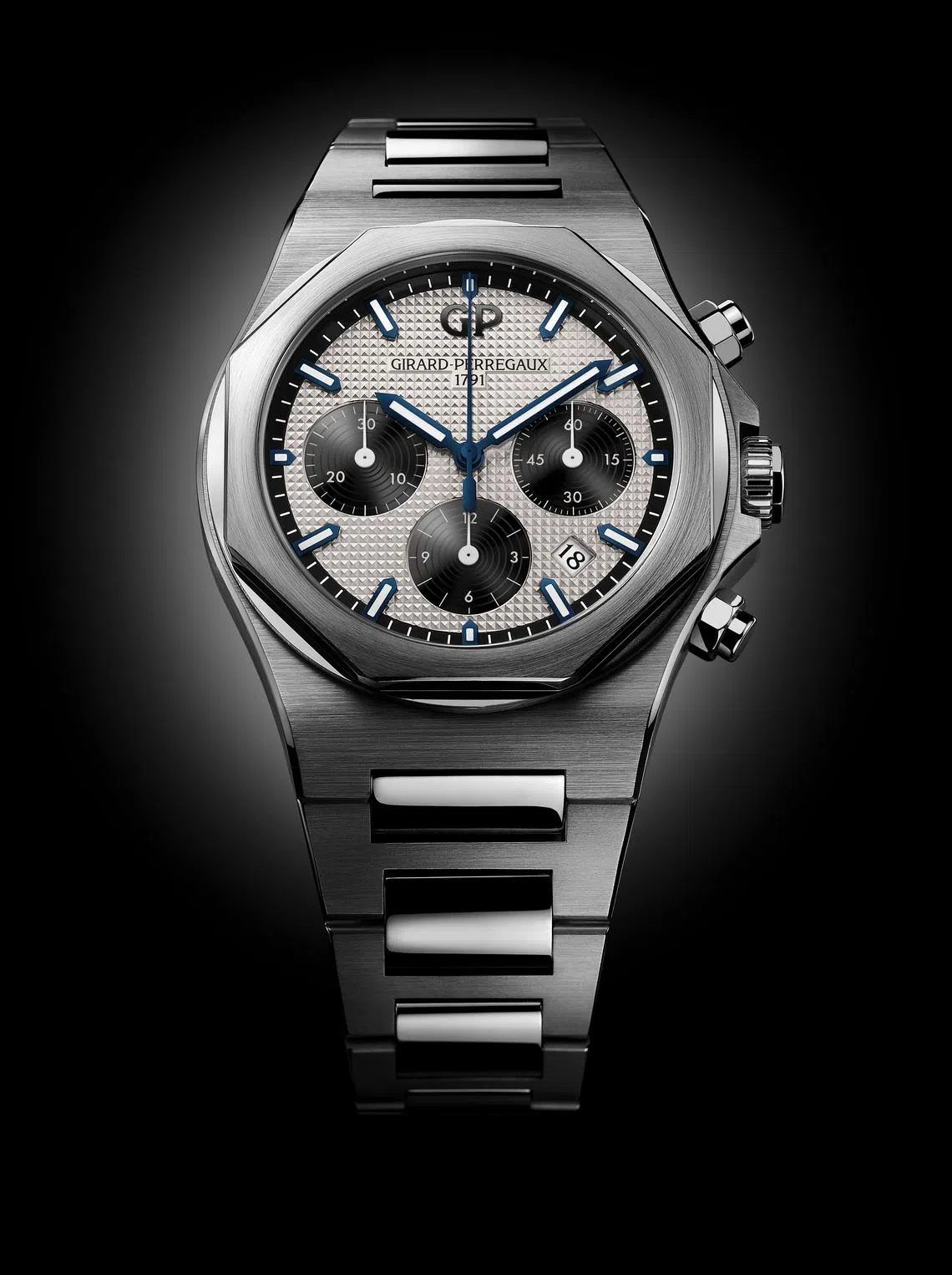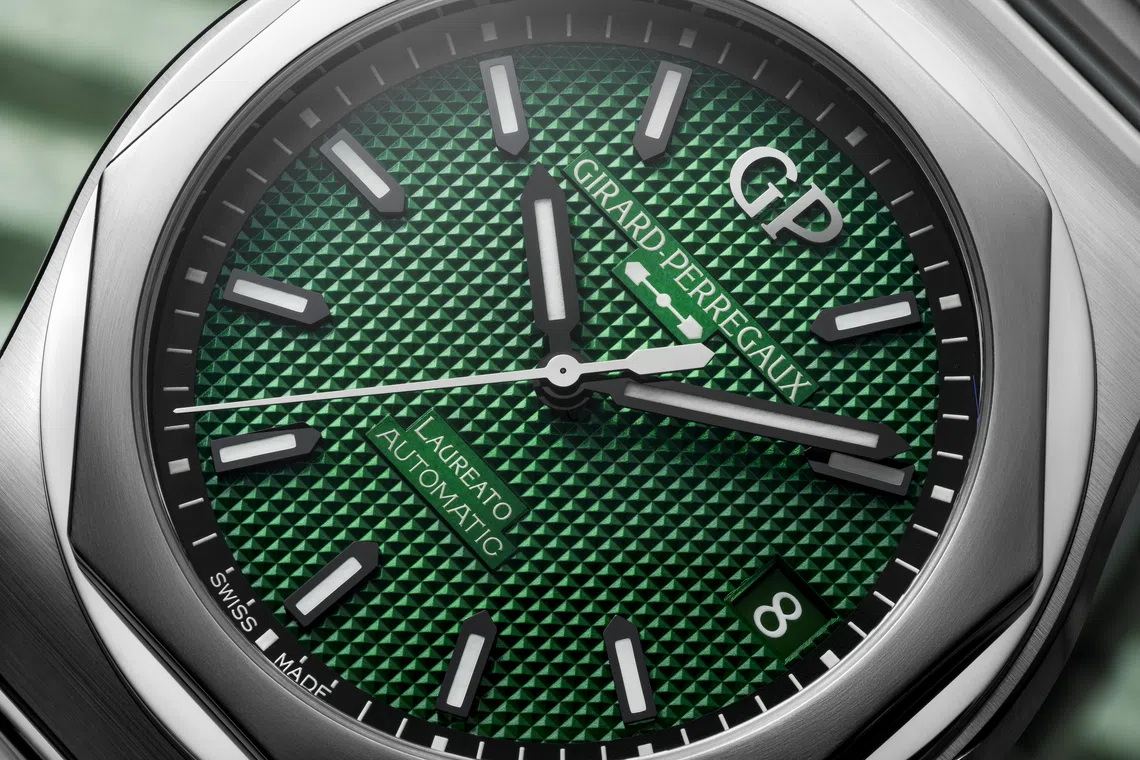Girard-Perregaux: A true child of the 1970s
THE Laureato is a child of the 1970s, a period which today is still hailed in the watch world for its visionary designs. The 1970s was also a time of the quartz watch revolution. In fact, the visionary designs were a response to the quartz challenge. The Laureato, launched in 1975, embraced both.
Two of the original watch designs of those early years that jump instantly to mind are the Royal Oak, rolled out in 1972, and the Nautilus in 1976. Royal Oak and Nautilus timepieces have since gone on to attain iconic status – and continue to draw multi-year waiting lists of customers.
According to Girard-Perregaux, the Laureato is also one of the few watch designs from the same period that’s still recognisable today, despite the onset of years.
Like the dominant designs of the 1970s, it sports a steel integrated bracelet with a steel case that’s clearly not in the conventional round or square shape. Instead, the design of Laureato “united a number of different shapes to form a distinctive, yet cohesive, look”, says Girard-Perragaux. An octagonal bezel sits atop a round ring, which in turn is positioned above an angular tonneau-shaped case.
Another key design feature is the interplay of polish and satin finishing throughout the watch, with the two finishes “clearly defined and discrete” from each other. The integrated bracelet is crafted for both efficiency and comfort.
While the Royal Oak and Nautilus were the mechanical timepiece’s answer to the Japanese quartz watch then shaking up the industry, the Laureato was originally a quartz watch. It was first called the “Quartz Chronometer” but in Italy, a key market for Girard-Perregaux at the time, the model was called “the graduate (Laureato in Italian) of the school of Girard-Perregaux”. The endearing name was a nod to the watch’s prize-winning success and high precision. Eventually, the brand adopted the name “Laureato”.
A NEWSLETTER FOR YOU

Friday, 2 pm
Lifestyle
Our picks of the latest dining, travel and leisure options to treat yourself.
With the revival of mechanical watches, Girard-Perregaux, which has been producing in-house mechanical movements for over 230 years, presented the Laureato 8010 powered by an in-house automatic calibre. Today, only the Laureato in the 34 mm-wide case is equipped with a quartz movement; all other Laureato watches in larger cases run on mechanical movements.
Subtle changes were made to the design of the model over the years, but the essence of the first Laureato is always there, even as its collection continues to grow. Here are the 3 latest additions to the Laureato family:

Laureato Chronograph This comes in steel or pink gold and in a 38 or 42 mm case that frames a silver, black or dark blue dial with a “Clous de Paris” pattern. The baton hands are lined with luminescent material that glows in dim light. An automatic chronograph movement drives 2 counters and small seconds as well as a date display.
SEE ALSO

Laureato 42mm Green Highlighted by a trendy green dial paired with a “Cloud de Paris” dial pattern, this model in a 42 mm-wide steel case juxtaposes a black flange with the green dial colour – a first for a Laureato with 3 hands. The baton-style hands and indexes are in PVD black and coated with luminescent material. The watch is powered by a self-regulating movement.
Laureato 42mm Pink Gold & Onyx A sumptuous handcrafted black onyx dial is matched with the all pink gold, including bracelet, of the timepiece. The onyx is described as a “luxurious material (that) draws on the expertise of time-served craftspeople who shape and polish the material by hand”. And the thin dial “requires no fewer than 15 different operations” to create from onyx, yielding a surface that looks “exquisite with its mirror-like appearance”.
Copyright SPH Media. All rights reserved.

